Basic and Advanced Training
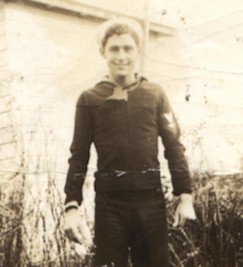
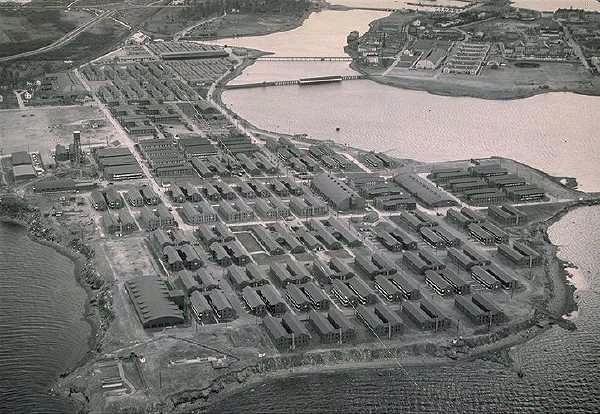 Newport as tens of thousands of young men arrived for training. Coaster's Harbor Island was unable to accommodate the influx of men, so land at Coddington Point was added to the Naval Training Station.
Coddington Point was turned into a city of tents and wooden buildings as more than 75,000 recruits passed through Newport.
After the war peacetime brought reductions. In 1919 the Congress cut the Navy's budget below its "irreducible minimum," and was slow in providing funds even for routine maintenance. The Washington Disarmament Conference of 1921-22 followed these federal budget reductions. The
Conference restricted the size and armament of warships and terminated construction of some Navy ships already in progress. During the twenties and Thirties the Naval station was under a period of stagnation and degradation. However with the advent of World War II, Newport once again became a strong center of naval activity.
Newport
Newport as tens of thousands of young men arrived for training. Coaster's Harbor Island was unable to accommodate the influx of men, so land at Coddington Point was added to the Naval Training Station.
Coddington Point was turned into a city of tents and wooden buildings as more than 75,000 recruits passed through Newport.
After the war peacetime brought reductions. In 1919 the Congress cut the Navy's budget below its "irreducible minimum," and was slow in providing funds even for routine maintenance. The Washington Disarmament Conference of 1921-22 followed these federal budget reductions. The
Conference restricted the size and armament of warships and terminated construction of some Navy ships already in progress. During the twenties and Thirties the Naval station was under a period of stagnation and degradation. However with the advent of World War II, Newport once again became a strong center of naval activity.
Newport
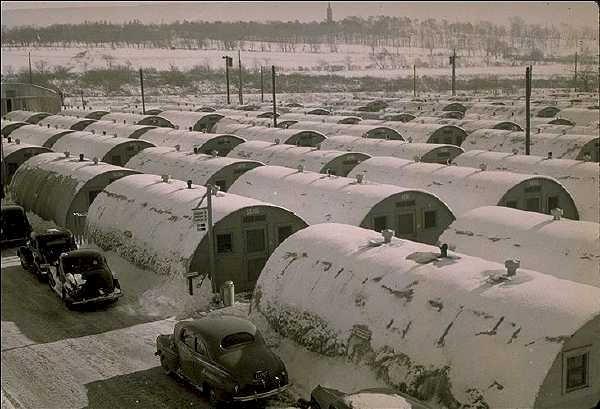
Naval Training Station, San Diego, CA
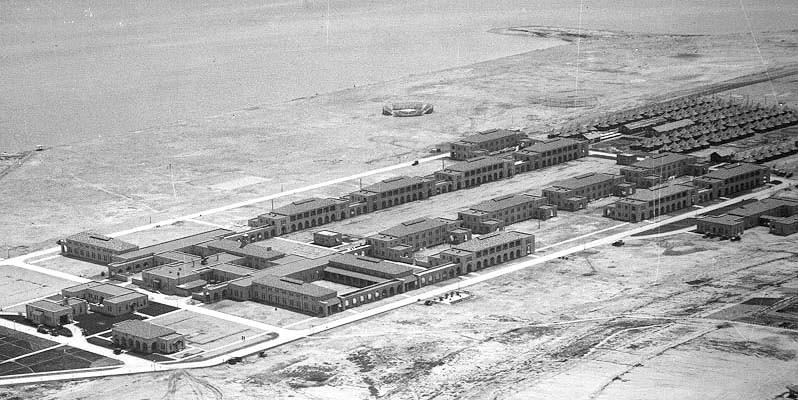 Uncle John arrived at San Diego NTS on September 8, 1936. He remained here until March 20, 1937 for further training.
Training consisted of learning the basics in the rating of radioman. The San Diego NTS was established in 1916.
Plans for construction were delayed until 1919, when Congress authorized acceptance of the Training Center.
Construction work began in 1921, and on June 1, 1923 the U. S. Naval Training Station, San Diego, was placed in commission under the command of Captain David F. Sellers, U. S. Navy.
Camp John Paul Jones, a subdivision of the training center, housed the entire population of the station and the maximum
number of recruits was around 1,500.
Uncle John arrived at San Diego NTS on September 8, 1936. He remained here until March 20, 1937 for further training.
Training consisted of learning the basics in the rating of radioman. The San Diego NTS was established in 1916.
Plans for construction were delayed until 1919, when Congress authorized acceptance of the Training Center.
Construction work began in 1921, and on June 1, 1923 the U. S. Naval Training Station, San Diego, was placed in commission under the command of Captain David F. Sellers, U. S. Navy.
Camp John Paul Jones, a subdivision of the training center, housed the entire population of the station and the maximum
number of recruits was around 1,500. 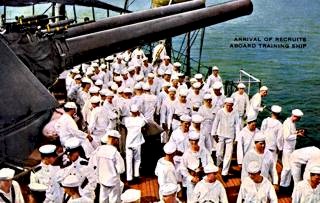 Recruit training was then sixteen
weeks and during the 1920's the Recruit Receiving and Outgoing Units were housed in
Camp Ingram, which consisted of a group of walled tents adjacent to the south boundary of Camp John Paul Jones. In 1939 a
new construction plan was started that expanded the size of the training
station. When it was completed in 1942, the capacity of the station was
now four times the pre 1939 amount. During the height of the war the capacity of the station reached
a peak of more than 33,000 men, 25,000 of whom were recruits. Due to the
shortage of manpower needed to man the new ships coming off the ways in the
shipyards the period of recruit training during World War II was reduced to between three weeks and seven weeks.
In April, 1944, the Secretary of the Navy changed the status
Recruit training was then sixteen
weeks and during the 1920's the Recruit Receiving and Outgoing Units were housed in
Camp Ingram, which consisted of a group of walled tents adjacent to the south boundary of Camp John Paul Jones. In 1939 a
new construction plan was started that expanded the size of the training
station. When it was completed in 1942, the capacity of the station was
now four times the pre 1939 amount. During the height of the war the capacity of the station reached
a peak of more than 33,000 men, 25,000 of whom were recruits. Due to the
shortage of manpower needed to man the new ships coming off the ways in the
shipyards the period of recruit training during World War II was reduced to between three weeks and seven weeks.
In April, 1944, the Secretary of the Navy changed the status  of the Training Station to that of a group command and designated it the U. S. Naval Training Center, San Diego. Under the Center Commander were established three subordinate commands: The Recruit Training Command, The Service School Command and the Administrative Command. Uncle John underwent sixteen weeks of Radioman training and was assigned to Utility Squadron ONE (VJ-1)on the USS Wright (AV-1) at
the San Diego Naval Station, located across the bay.
of the Training Station to that of a group command and designated it the U. S. Naval Training Center, San Diego. Under the Center Commander were established three subordinate commands: The Recruit Training Command, The Service School Command and the Administrative Command. Uncle John underwent sixteen weeks of Radioman training and was assigned to Utility Squadron ONE (VJ-1)on the USS Wright (AV-1) at
the San Diego Naval Station, located across the bay.
Utility Squadron ONE (VJ-1) Uncle John’s first command after radioman training was Utility Squadron ONE or UTRON1 aboard the USS Wright (AV-1) a seaplane tender. He would transfer between the two Utility squadrons for the most part of his first enlistment. Uncle John was initially assigned to UTRON1 but transferred to UTRON 2 in June of 1937, then back to UTRON1 again in 1939 and back to UTRON 2 in 1941. UTRON 1, was established on Oct 25, 1925 at NAS San Diego, California, later to become NAS North Island. While there UTRON 1 operated detachments at various times In Panama, Guantanamo Bay, Cuba, Alaska, and Hawaii. The Utility Squadrons mission was primarily the towing of aircraft targets for aircraft gunners and secondarily ship gunnery, the primary function of UTRON1 had been ‘Services for the Fleet’. From September 1935, until June 1940, this squadron also maintained, on a twenty-four hour basis, a crash and rescue plane, ready for immediate flight to the scene of crashes and rescues in the vicinity of the Naval Air Station, San Diego, California. In 1935, due to the nature of the services required, the squadron was placed under the Base Force and was attached to the USS WRIGHT. From the time of her arrival at NAS, North Island, on 20 February 1932 until 10 September 1939, Wright made 14 extended cruises in support of naval seaplane squadrons. USS WRIGHT(AZ-1)

The first Wright (AZ-1) was originally the unnamed "hull no. 680" laid down at Hog Island, Pa., by the American International Shipbuilding Corp. under a United States Shipping Board contract. Named Wright on 20 April 1920, the ship was launc hed on 28 April. A little over two months later, the Navy signed a contract with the Tietjen and Lang Dry Dock Co. of Hoboken, N.J., to convert the ship to a unique type of auxiliary vessel—a "lighter-than-air aircraft tender." On 17 July 1920, the ship received that classification and was designated AZ-1. The Wright (AZ-1) was commissioned at the New York Navy Yard on 16 December 1921. Her first commanding officer was Capt. Alfred W. Johnson, who also discharged the collateral duties of Commander, Air Squadrons, Atlantic Fleet. Johnson was the first of a long line of commanding officers for the ship, some of whom later distinguished themselves—men such as John Rodgers, Ernest J. King, Aubrey W. Fitch, P. N. L. Bellinger, and Marc A. Mitscher. On 26 March 1937 the USS Wright arrived in San Diego, from an extended cruise in the Carribean in support of Aviation Squadrons stationed there. Uncle John reported aboard the ship and was assigned to UTRON1. The USS Wright then departed the west-coast on 18 April in company with the USS Langley (CV-1) for fleet problems that stretched to the Hawaiian Islands. Following her return to San Diego on 3 June, Wright spent the next year in coastal operations that took her as far south as Baja, California. She then turned around and made a cruise to Kodiak Alaska and the Sitka Sound between 20 June and 5 August 1938. On October 20, 1938, Commander, Aircraft Scouting Force, was detached from the ship, and Wright became flagship for Commander, Patrol Wing (PatWing) 1, Aircraft, Scouting Fleet. The tender departed San Diego on January 2, 1939 to participate in winter maneuvers in the Caribbean with her aviation units and took part in Fleet Problem XX. Reaching Norfolk from Puerto Rico on 14 March, the seaplane tender returned to the west-coast so on thereafter, as part of the general movement of the fleet from Atlantic to Pacific. Back at San Diego. On 16 May, the USS Wright operated out of San Diego until September 10th when she sailed for the Hawaiian Islands to become flagship for PatWing 2, based at Pearl Harbor. Uncle John would transfer to Norfolk Utility Wing Detachment for 60 days of temporary duty arriving there on 1 October, 1939.
Sikorsky JRS-1 “Flying Boat”
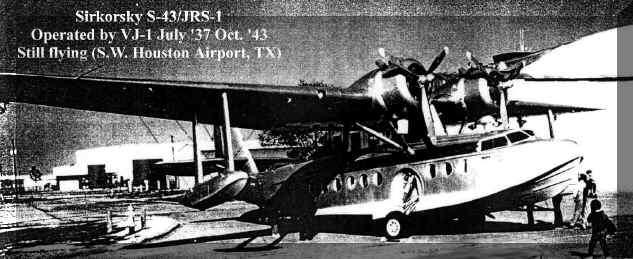
Grumman JF-1/J2F “Duck”
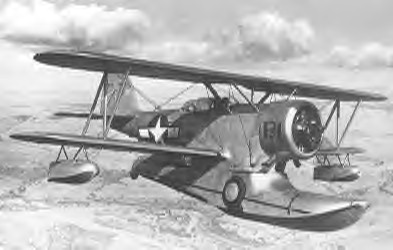
Also in 1935 the need for a plane capable of aircraft rescue work was urgently required. It was apparent that the plane had to be of an amphibious type in order to reach crash sites either on water or land. The arrival of the JF-1 type aircraft in the squadron fitted this requirement extremely well and a plane of this type was placed on a twenty-four hour “manned and ready” status. This “ready plane”, as it became known, was maintained at San Diego by Utility Squadron One. Although this “ready plane” was kept primarily for rescue work at sea, it was also called upon to transport medical help to land crashes. For two years it was stationed adjacent to the Dispensary Building at Naval Air Station, San Diego, and, when required, a doctor could be dispatched by air in a moment’s notice. The number of crashes that were attended by this “ready plane” and the number of personnel saved is not known, nor could it be estimated, but records show that the plane often flew to as many as three and four crashes in a single day. Early in 1936 the squadron’s planes were first equipped with voice radio; all transmissions before this time having been by key or messages sent by the use of blinker lights. Many ships were not equipped with voice radio and C.W. transmissions remained very popular, due principally to improper microphone technique or faulty voice circuits. The first JF-1s were delivered in late 1934. The last version was the J2F-5 and these were delivered in 1940. Most of the JF-1/J2F Ducks remained in service throughout WW II. They were operated from carriers and land bases in a variety of roles, including patrol, photo-survey, rescue and target towing.
Utility Squadron TWO
After his temporary assignment in Norfolk, VA Uncle John was assigned back to Utility Squadron TWO although this time he was sent to another Detachment onboard the USS Rigel AR-11. He reported aboard on November 30, 1939 and would remain with UTRON2 until June of 1941.
VJ-2 was on of the many squadrons during the war to get the now famous PBY-1 Catalina flying boats. These
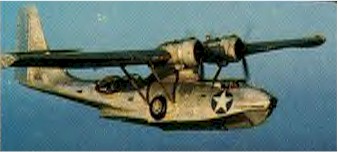 versatile aircraft would prove perfect for search an
rescue missions as well as all the miscellaneous missions that VJ-2 would have to fly. The Duties and responsibilities of UTRON 2 were the same as those for UTRON 1 only difference was the type of Aircraft now serviced. UTRON 2 also had a few of the venerable J2F Ducks. In June, Uncle John would transfer back to UTRON 1 for temporary duty with the squadron while it was attached to the USS Rigel (AR-11) in Pearl Harbor Hawaii.
versatile aircraft would prove perfect for search an
rescue missions as well as all the miscellaneous missions that VJ-2 would have to fly. The Duties and responsibilities of UTRON 2 were the same as those for UTRON 1 only difference was the type of Aircraft now serviced. UTRON 2 also had a few of the venerable J2F Ducks. In June, Uncle John would transfer back to UTRON 1 for temporary duty with the squadron while it was attached to the USS Rigel (AR-11) in Pearl Harbor Hawaii.
USS Rigel (AR-11)
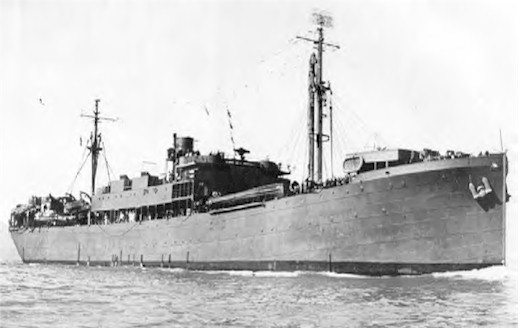
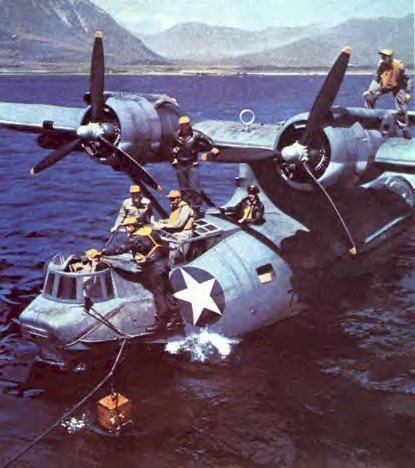 World
War II: NAS Pensacola, FAW-4, and CASU-7
World
War II: NAS Pensacola, FAW-4, and CASU-7 Joao
(John) Santos: Home Page
Joao
(John) Santos: Home Page They
Served with Honor: Home Page
They
Served with Honor: Home Page